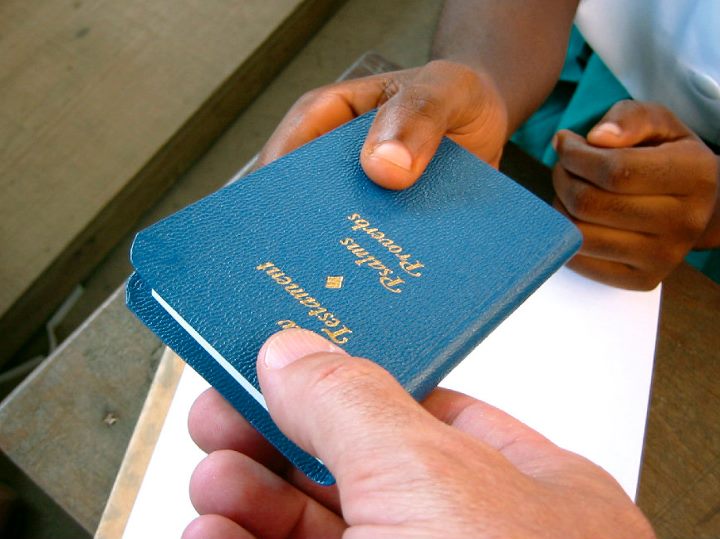Christianity erodes church, state division
Sep 18, 2019
The variety of experiences, attitudes and beliefs on any campus is an amazing blend of what the world has to offer. At any given moment we could be standing next to people from multiple religions in a courteous manner.
However, they don’t necessarily share similar ideas or points of view.
It is a common courtesy that people agree not to push their beliefs onto others without solicitation or proper context.
So, it spurs a confusing feeling whenever I see pocket-sized Bibles strewn around the campus.
I thought that there was always a strict separation of church and state, so seeing an abundance of singular religious text strikes me as some sort of flaw.
The very fact that we see religious text distributed in public means sometimes we are forced to interact with strangers about religious ideology.
That dialogue can range from a quick and polite refusal to harsher feelings, but will always be an interaction no one planned for in their day.
Things would be different if we were presented with texts from multiple religions on a designated place on campus. However, these bibles are sporadically placed even right next to the ordering kiosk in the cafeteria.
Whenever someone sees a small bible it is effectively an advertisement for Christianity, one that no one signed up for, especially not at a state-sponsored place of learning. Worse than that, presenters can become pestering when they fail to accept a student’s refusal of interest.
A student told someone who offered to talk about religion that they did not want to hear about it and they were followed with repeat offerings.
Such interactions are bothersome at best or borderline harassment at worst.
When arriving on campus, students expect to have a multitude of perspectives available to learn from.
However, when there’s only one type of scripture being passed around, it invades everyone’s space with a certain pressure whether they want it to or not.
The presence of religion on campus could be a learning opportunity if texts from multiple religions were being welcomed and presented.
Imagine seeing the teachings of the buddha in the Tipitaka, or the Quran which in Islam is said to be the word of god through Mohammed. There is also the Guru Granth Sahib from Sikhism and the Tanakh and the Talmud from Judaism. There are multiple religions whose scriptures students are left completely unexposed to.
When the only unwarranted exposure students face comes from one religion it may leave them sour to explore other options.
Organized religion is starting to face new challenges in the modern era as the number of Americans who identify with no religion has grown steadily. CNN conducted a general social survey in which 23.1 percent of participants identified with no religion compared to only 5 percent in 1972. Data also shows Protestant denominations fell from 28 to 11 percent, Catholics have gone from 27
to 23 percent and Evangelicals rose from 17 to 23 percent.
If there is going to be a religious presence on a college campus, people presenting need to respect the student body’s boundaries.



